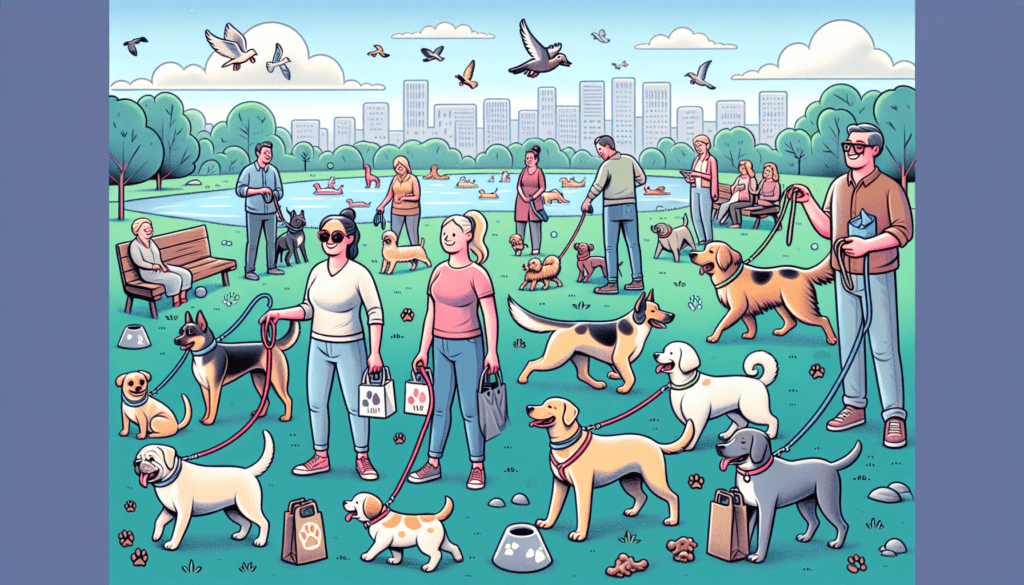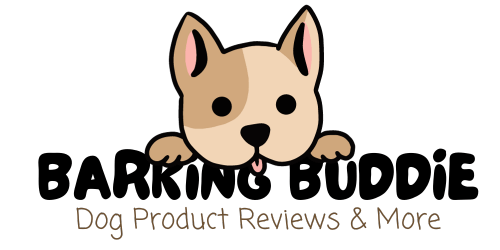If you’re a dog owner or a member of a dog community, you know how important it is to have a harmonious environment where everyone can enjoy their furry friends. That’s why establishing a Dog Community Code of Conduct is key. This article will guide you through the process of creating a set of guidelines that will help ensure a positive and respectful atmosphere for both dogs and their owners. With a clear and comprehensive code in place, you can enjoy a thriving dog community where everyone feels safe, included, and welcomed.
Why Establish a Dog Community Code of Conduct
Establishing a dog community code of conduct is essential to promote responsible dog ownership, encourage positive interactions among dogs and their owners, ensure the safety and comfort of all community members, and foster a clean and healthy environment. A code of conduct acts as a set of guidelines that dog owners can follow to ensure that their pets are well-behaved and respectful towards others. By having a clear and comprehensive code of conduct in place, dog communities can create a harmonious and enjoyable environment for everyone involved.
Identify the Need for a Code of Conduct
The need for a code of conduct arises from the diverse range of individuals and breeds that make up a dog community. With different personalities, preferences, and training levels, it is crucial to have a set of guidelines that establish expectations for behavior. This ensures that all members of the community, both two-legged and four-legged, can coexist peacefully and enjoy their time together. Without a code of conduct, disagreements and conflicts may arise, leading to a negative experience for everyone involved. An established code of conduct helps prevent these issues by providing a framework for dog owners to follow.

Research Existing Codes of Conduct
Before creating a dog community code of conduct, it is essential to research existing codes to gather inspiration and ensure all important aspects are covered. Start by reviewing the local dog community codes of conduct in your area. These codes may include specific regulations or guidelines tailored to the needs and culture of the community. Additionally, explore online dog community codes of conduct to gain insights from a wider range of dog owners and organizations. By examining and comparing different codes, you can identify what works well and adapt those aspects to meet the unique needs of your own dog community.
Review Local Dog Community Codes of Conduct
Local dog community codes of conduct are often established by local government bodies or community organizations to maintain order and safety in public spaces. These codes typically outline regulations related to leash laws, waste management, and restrictions on specific behaviors or breeds. By reviewing these codes, you can gain a better understanding of the expectations, requirements, and limitations that govern dog ownership within your community. Incorporating relevant aspects from local codes into your own community’s code of conduct can help ensure consistency and compliance with existing regulations.
Explore Online Dog Community Codes of Conduct
In addition to local codes, exploring online dog community codes of conduct allows you to tap into a wealth of knowledge and experiences from dog owners around the world. Online communities often have vibrant discussions about dog ownership, training, and etiquette, making them a valuable source of information. By examining different examples of codes of conduct, you can gather ideas for promoting responsible dog ownership, encouraging positive interactions, and addressing specific concerns or challenges. Online codes of conduct can also provide insights into best practices for communication methods and reporting systems.
Determine Key Principles and Values
Once you have conducted thorough research on existing codes, it is time to determine the key principles and values that will underpin your dog community code of conduct. These principles should reflect the core values of responsible dog ownership, positive interactions, safety, and cleanliness. By establishing these guiding principles, you create a strong foundation for the behavior expectations within your dog community.
Promote Responsible Dog Ownership
Promoting responsible dog ownership is a fundamental principle of any dog community code of conduct. This includes ensuring that all dogs are properly cared for, well-behaved, and up to date on vaccinations. Responsible dog ownership also involves being aware of and complying with local regulations, such as leash laws and waste management requirements.
Encourage Positive Interactions
Encouraging positive interactions between dogs and their owners is another key principle to include in the code of conduct. This can be achieved through fostering a friendly and welcoming environment, where dog owners respect each other’s boundaries and encourage their dogs to play and socialize appropriately. Emphasizing the importance of positive interactions helps create a sense of community and camaraderie among dog owners.
Ensure Safety and Comfort for All
Ensuring the safety and comfort of all community members, both human and canine, is crucial. Safety guidelines should address issues such as aggression, proper supervision, and preventing dog-related accidents. Additionally, the code of conduct should promote a comfortable environment by discouraging behaviors that may cause discomfort or anxiety in other dogs or individuals, such as excessive barking or invasions of personal space.
Foster a Clean and Healthy Environment
Maintaining a clean and healthy environment is not only important for the aesthetic appeal of the dog community but also for the overall well-being of the dogs and their owners. Guidelines on waste management, such as proper disposal of dog waste, are essential to promote cleanliness and hygiene. Additionally, emphasizing the importance of regular grooming and veterinary care can contribute to a healthy and thriving dog community.

Define Acceptable Behavior
To establish a dog community code of conduct, clear guidelines on acceptable behavior need to be outlined. These guidelines should cover various aspects of dog ownership, including on-leash and off-leash etiquette, dog waste management, respecting personal space, and proper training and control of dogs.
On-Leash and Off-Leash Etiquette
The code of conduct should address the expectations for dog owners regarding leash usage. This may include requirements for dogs to be kept on a leash in public areas or specific designated areas for off-leash play. Guidelines on appropriate leash length, equipment, and handling techniques can also be provided. By establishing on-leash and off-leash etiquette, the code of conduct helps prevent conflicts and ensures the safety of all dogs and individuals within the community.
Dog Waste Management
Proper dog waste management is a vital aspect of responsible dog ownership. The code of conduct should outline expectations for dog owners to promptly clean up after their pets and properly dispose of the waste. It can also provide guidance on carrying waste bags, locating waste disposal stations, and encouraging dog owners to report any maintenance issues related to waste management. By addressing this issue, the code of conduct helps maintain a clean and healthy environment for all community members.
Respecting Personal Space
Respecting personal space is essential in promoting a harmonious dog community. The code of conduct should emphasize the importance of allowing individuals and dogs to have their own personal space. This includes refraining from petting or approaching dogs without permission from their owners, as well as keeping dogs under control in social settings. By respecting personal space, dog owners can help prevent territorial disputes and ensure a comfortable environment for all.
Proper Training and Control
Training and control play a significant role in maintaining an orderly and respectful dog community. The code of conduct should encourage dog owners to provide proper training for their pets, including basic obedience commands and socialization. It can also address the importance of using appropriate training techniques that do not inflict harm or cause distress to the dog. By promoting proper training and control, the code of conduct creates an environment where well-behaved dogs are the norm.
Consider Specific Dog Breed Guidelines
When establishing a dog community code of conduct, it is important to consider specific guidelines tailored to different dog breeds. Certain breeds may have unique characteristics or behaviors that require specific attention. By addressing these breed-specific considerations, the code of conduct can encompass a broader range of dog owners and ensure fairness and understanding throughout the community.
Some examples of breed-specific guidelines may include muzzle requirements for certain breeds, special considerations for brachycephalic dogs, or restrictions on aggressive breeds in certain areas. It is essential to consult with experts such as veterinarians or breed associations to ensure accurate and appropriate guidelines are included.

Establish Guidelines for Dog Owners
In addition to guidelines for dog behavior, the code of conduct should also establish clear expectations for dog owners themselves. These guidelines may cover areas such as registration and identification, vaccinations and health checks, and dog park membership or permits.
Registration and Identification
Requiring dog owners to register their pets and maintain proper identification helps ensure accountability within the community. The code of conduct should outline the need for up-to-date registration information, including contact details and proof of ownership. This information can aid in resolving any disputes or incidents that may arise within the community.
Vaccinations and Health Checks
To promote the health and well-being of all dogs within the community, the code of conduct should encompass guidelines regarding vaccinations and regular health checks. Ensuring that dogs are up to date on essential vaccinations can help prevent the spread of diseases and protect the overall population. Regular health checks are also important to detect any potential health issues and ensure that all dogs are in good condition.
Dog Park Membership or Permit
If your dog community includes a designated dog park, the code of conduct should address the requirements for accessing and utilizing the park. This may include rules for obtaining membership or permits to use the park facilities. By establishing these guidelines, the code of conduct helps ensure fair access to resources and facilities within the community.
Outline Consequences for Violations
To maintain order and accountability within the dog community, it is necessary to establish clear consequences for violations of the code of conduct. These consequences should be fair, proportional to the offense, and aim to correct behavior rather than punish. Common types of consequences may include verbal warnings and education, temporary suspension or probation, and in severe cases, permanent ban from the community.
Verbal Warnings and Education
For minor violations or first-time offenses, providing verbal warnings and educational materials can be an effective means of correction. This approach allows individuals to learn from their mistakes and encourages them to adhere to the code of conduct moving forward. Verbal warnings can be accompanied by educational resources, such as brochures or online materials, to provide further guidance on expected behavior.
Temporary Suspension or Probation
In cases where repeated offenses or more serious violations occur, temporary suspension or probation may be appropriate. This measure ensures that individuals take time to reflect on their actions and make necessary changes to their behavior. Temporary suspensions or probation periods should be clearly defined and communicated to all community members, along with the conditions for reinstatement.
Permanent Ban from Community
In extreme cases where repeated offenses or severe violations occur, a permanent ban from the dog community may be necessary. This step ensures the safety and well-being of the community as a whole and sends a strong message that certain behaviors will not be tolerated. Permanent bans should be enacted only after thorough evaluation and consideration of all available information.

Set up a Communication Method for Concerns
To address concerns and provide a platform for community members to report issues or violations, it is essential to establish a clear and accessible communication method. This includes designating a community liaison, providing contact information, and creating a reporting system.
Designate a Community Liaison
Appointing a community liaison serves as a point of contact for community members to seek guidance, report concerns, or ask for clarification on the code of conduct. The liaison should be knowledgeable about the code and capable of addressing various issues that may arise. Their role is to ensure effective communication and resolution of concerns within the community.
Provide Contact Information
To facilitate reporting of concerns or inquiries, the code of conduct should provide clear contact information for the community liaison or other designated individuals. This can include email addresses, phone numbers, or dedicated online forms. Ensuring that this information is easily accessible enables prompt communication and swift response to any issues.
Create a Reporting System
Establishing a formal reporting system allows community members to provide detailed information about concerns or violations. This system should include a template or form that captures relevant details, such as the nature of the issue, date, time, location, and any supporting evidence. By creating a standardized reporting process, the community can effectively address concerns in a fair and transparent manner.
Continuously Monitor and Update the Code of Conduct
The establishment of a dog community code of conduct does not mark the end of the process. It is essential to continuously monitor and update the code to ensure its ongoing effectiveness and responsiveness to changing community needs.
Evaluate the Effectiveness of the Code
Regular evaluations are necessary to assess whether the code of conduct is achieving its intended goals and meeting the needs of the community. This evaluation can be done through surveys, community meetings, or feedback from community members. By gathering insights and feedback, you can identify areas that may need improvement or amendment.
Address Changing Community Needs
As a dog community evolves, it is important to address the changing needs and dynamics of the community. This may include incorporating new regulations or guidelines from local authorities, considering feedback from community members, or addressing emerging challenges. Keeping the code of conduct up to date ensures its relevance and effectiveness in maintaining a harmonious and enjoyable dog community.
Periodically Communicate Updates
Regular communication about updates to the code of conduct is crucial to ensure that all community members are aware of any changes. This can be done through newsletters, online forums, or community meetings. By proactively communicating updates, you foster transparency and encourage compliance with the evolving guidelines.
In conclusion, establishing a dog community code of conduct is essential for creating a cohesive and enjoyable environment for both dogs and their owners. By identifying the need for such a code, researching existing codes, determining key principles and values, defining acceptable behavior, considering specific breed guidelines, outlining guidelines for dog owners, establishing consequences for violations, setting up a communication method for concerns, and continuously monitoring and updating the code, you can establish a comprehensive and effective code of conduct. This code of conduct will serve as a valuable tool in promoting responsible dog ownership, positive interactions, safety, and cleanliness within your dog community.



